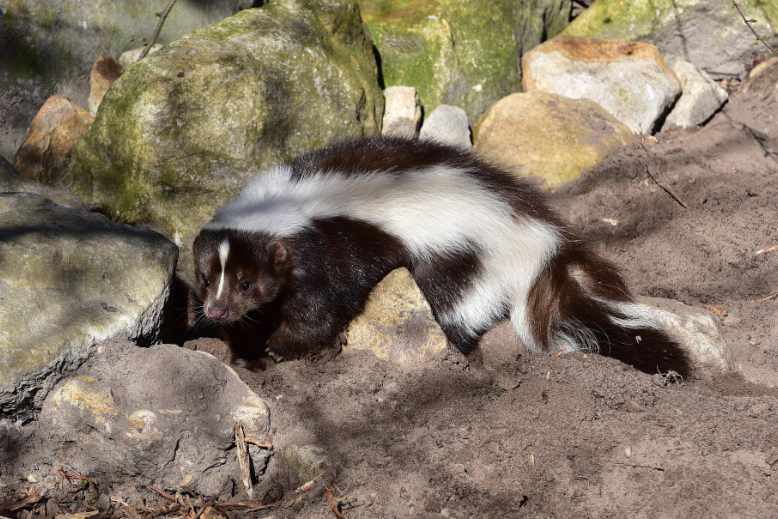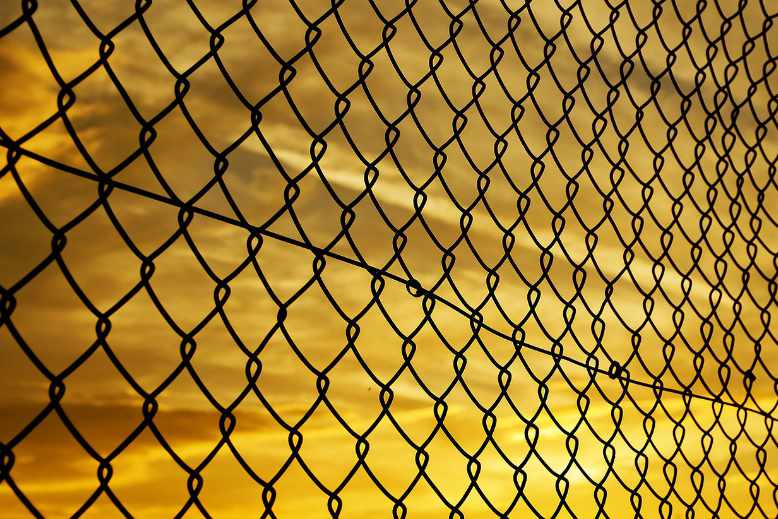Can skunks climb brick walls? Skunks are perfectly able to mount a short brick wall, but they can’t climb higher. Nevertheless, not all skunk species are excellent climbers. Spotted skunks are great climbers because they have lightweight, small, and flexible bodies accompanied by sharp claws that enhance their climbing capabilities. So climbing a brick wall is a no-brainer for them. On the other hand, striped skunks aren’t great climbers. Their stocky bodies, short but strong legs, and tough claws make climbing through walls challenging.

Skunks are curious little animals having a wide range of capabilities. The good thing about their presence in your backyard or garden is that they work as natural pest control to fight against beetles, grubs, mice, rats, crickets, and other pests. The bad thing about them is, well, they stink! Their pungent smell makes anyone run away from them. Gardeners take necessary steps to keep them out of their place, but they keep coming back. How do they do that? Can skunks climb brick walls and fences? If so, do all skunks excel at climbing?
Read the article to find out all about it!
Can skunks climb brick walls?
Skunks can climb a brick wall of around 6 feet in height. However, only some of their species excel at climbing.
The ability to climb brick walls or fences has a lot to do with the low body weight and the capability to grip well enough onto a brick wall to support your weight as you climb.
Small animals like squirrels have tiny and flexible bodies, so they have no problem doing this. But stripped skunks can’t do that. They have short claws, but they aren’t strong enough to support their stocky bodies as they climb. Their bushy tail prevents them from maintaining their balance while climbing. Plus, their bodies are too heavy for their claws to support their body weight. These skunks prefer living in open areas where they don’t have to climb.
The only skunk known to climb brick walls is the spotted skunk. These skunks have small and flexible bodies, and their claws are great for climbing. These potential thieves can quickly climb brick walls, chimneys, garbage cans, fences, and even attics.
Can skunks climb cinder block walls?
Unlike brick walls, cinder block walls have a flatter surface. Plus, they have no gaps between the bricks to support climbing for small animals and rodents. Animals like squirrels and raccoons can use their claws to dig into these bricks and climb, but stripped skunks cannot do so.
On the other side, spotted skunks have no problem climbing cinder block walls. Their foot pads assist them in climbing up smoother surfaces.
Can skunks climb fences?
Skunks can and do climb fences if and when they need to. They can enter your fenced backyards without difficulty to hunt smaller animals and rodents down at night. If a skunk cannot climb or dig through the fence, he may try to climb a nearby tree to get inside. Therefore, you must know how far a skunk can go to eat.
You may think installing a medium-sized fence is more than enough to stop skunks from getting into your backyard, but this isn’t true with spotted skunks, as they are excellent climbers. The only way to stop skunks from climbing and digging in is to install a fence high enough for these predators to get inside.

Can skunks climb a 6-foot fence?
Skunks, especially spotted skunks, can climb a six-foot fence with little to no difficulty. In fact, fences made of wire mesh, wood, or chain-link are more manageable for these creatures to climb than smoother surfaces.
Six feet is the maximum height a skunk can climb over. However, most skunks don’t like to put in the extra effort, so they don’t attempt to climb a fence directly if it is over 18 inches.
That’s because climbing includes a lot of effort and work!
If an object is near your fence, a skunk may climb up that object to get inside. If a tree is nearby, the spotted skunk will likely climb onto it and pass through your fence.
Can skunks climb chain link fences?
Wire fences such as chain-link fences have gaps in them. Also, there are no smooth surfaces like cinder block or brick walls, so they are naturally easy for all kinds of skunks to climb over.
Skunks typically secure their hands between gaps of chain link fences to climb. These animals can climb up to 6 feet if they want to. This is a lot of work, but a skunk will do it if he has to.
Nonetheless, these animals prefer digging under the fences to reach their desired location. They are pretty efficient at digging, and their bodies are designed to dig instead of climb.
Can skunks climb on tables?
As we have stated earlier, not all skunks are fine climbers. A spotted skunk can climb fences, trees, brick walls, etc. So it won’t be difficult for them to climb onto tables. Their sharp choppers and long nails assist them in climbing over any rough surface.
Can skunks climb into attics?
By this point, we know that some species of skunks can climb, but they aren’t that much of a pro at climbing that high. No doubt they can climb into attics, but it won’t be easier for them to do so. If an object is nearby, a skunk may ascend on it to reach your roof for food or safety purposes.
If a skunk makes it to your attic, you may have to clean everything to eliminate the foul skunk odour.

Why do skunks climb walls and fences?
Skunks, being nocturnal creatures like to wander about at night and spend the day sleeping. When they head out at night, they explore for shelter and food.
These nocturnal creatures have developed a particular taste for backyard pests, including voles, grasshoppers, mice, weevils, grubs, hornworms, spiders, yellow jacket wasps, cutworms, Japanese beetles, slugs, and a few more pests, making them an efficient pest control for any backyard. For this reason, they climb through walls and fences to search for food.
If a skunk locates a good food source within your garden or backyard, he is most likely to visit you again and again unless you do something about it. Skunks will always find something to munch on in your gardens, such as vegetables, leaves, pests, and small rodents.
If skunks manage to climb through a wall and move into your property, such as a basement or crawl space, they may be planning to prepare a nest to raise their younglings. Though frustrating, if you find yourself in this situation, let the mother skunk be with her babies until they are old enough to survive on their own.
Can skunks jump?
They sure can!
Skunks possess a strong pair of hind legs. These legs may not help them climb rigid surfaces, but they are surprisingly helpful while jumping.
If skunks cannot climb or dig through your wall, they will try to jump over to get inside. Their hind legs enable them to jump up to 3 feet high, which means they can jump onto your shelves, deck, and other surfaces to search for food.
However, most skunks don’t get a chance to jump, so many don’t have this aptitude.
Final thoughts
Can skunks climb brick walls?
Well, the answer varies depending on the species of skunks. If we talk about spotted skunks, they can climb well onto rigid surfaces. In contrast, striped skunks are excellent diggers but poor climbers.
Skunks who wish to get inside your property may climb, dig, and jump up to 3 feet to get inside. However, if the brick wall is above 6 feet, a skunk may not have the nerve to climb that high.




